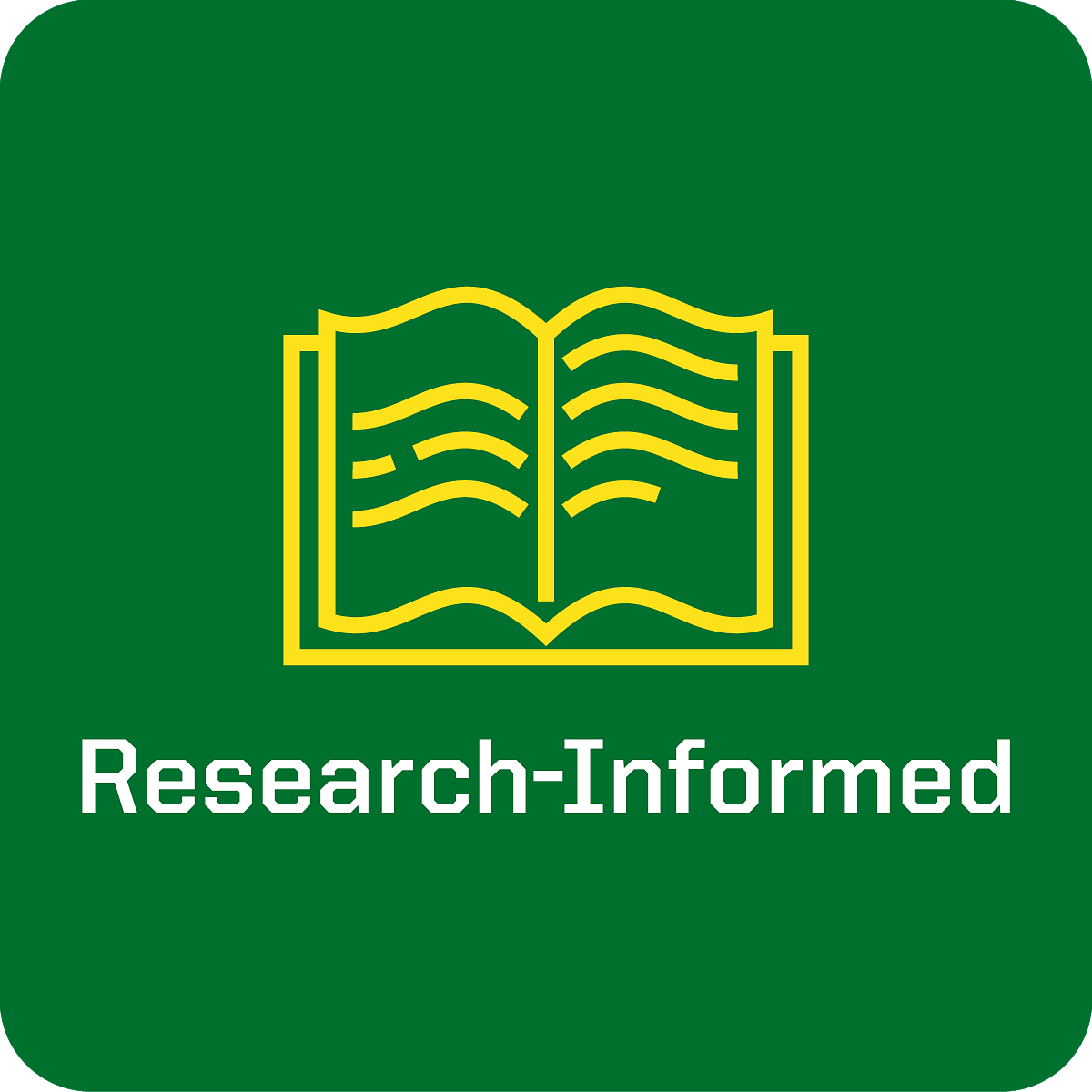
What is Research-Informed Teaching?
Research Mission
Research-informed teaching means the university’s research mission infuses into its educational program. This can be as simple as faculty leading with questions and modeling expert thought by “thinking aloud” when encountering problems. It can be as significant as partnering with students to create new knowledge.
Evidence-Based
Research-informed teaching also means that it’s evidence-based or informed by what we know about how students learn: actively, in contexts of high challenge and support, through collaborative work across differences of identity and viewpoint in response to frequent feedback, and with deliberate reflection on and integration of ideas across contexts.
Research-Informed teaching practices include:
- Instruction that models a process or culture of inquiry characteristic of disciplinary or professional expertise.
- Evaluation of student performance linked to explicit goals for student learning established by faculty member, unit, and, for core education, university; these goals and criteria for meeting them are made clear to students.
- Timely, useful feedback on activities and assignments, including indicating students' progress in course.
- Instruction that engages, challenges, and supports students.
Research-Informed Teaching Practices
There are many ways instructors involve students in learning about scholarly research or in learning how to do the work of research. Approximately 73% of UO students are engaged in research activities across campus, and most courses include key elements of scholarly research, from peer-reviewed articles that students read and discuss to term-long research projects that students prepare and communicate in some fashion. Most faculty also include a variety of pedagogical approaches or learning techniques that bolster student learning, based on evidence from learning science and the scholarship of teaching and learning. The following strategies indicate a variety of practices instructors can infuse in their courses to help students learn the value and significance of scholarly research and help students learn in ways supported by evidence about how people learn best.
Engage students in learning the scholarship of one’s discipline or field
Students can learn about the scholarship of a discipline or specific field in a variety of ways. These can include reading important scholarly texts, timely case studies, or cutting edge research findings. Students can also practice the work of research using scholarly methods or research protocols to investigate problems, generate hypotheses, solve issues, or predict trends. Instructors can also organize class discussions or group work using specific inquiry practices or ways of thinking based on how experts approach problems or issues, which allows students opportunities to practice thinking like an expert in a discipline or field. Specific strategies include the following:
- Develop course content that draws on relevant scholarship in your field or discipline
- Develop learning objectives focused on disciplinary scholarship. Writing learning objectives related to scholarship will help you clarify for yourself what important aspects of disciplinary research results and methods you want your students to learn. Clearly communicating these learning objectives to your students will help them understand what you are working toward.
- Showcase the latest developments and debates. You might do this by simply mentioning them in class, or by having students read original research publications, summaries/commentaries, or articles from the popular press; listen to podcasts featuring relevant scholars; or watch recordings of research talks posted on YouTube.
- Invite guest presenters. Create opportunities for your students to engage with researchers: invite UO colleagues whose work is relevant to your course material, have students attend colloquia in your department, or arrange for researchers to discuss their work with your class through a Zoom visit. Where possible, prepare your students for the interaction, perhaps by together reading a paper about the visitor’s work, analyzing the abstract provided for their colloquium, developing questions to ask of the visitor, or doing other activities related to the topic of the research. Similarly, plan to debrief the experience through small group or whole class discussion, written reflection, or summarizing the main points of the visitor’s presentation.
- Discuss your own research. When it is relevant, tell students about the research you do. Students are frequently unaware that many of their instructors also do cutting-edge research, so take the opportunity to expand the students’ sense of what happens at the university. Do you have a research lab or studio? Host student tours if the class isn’t too large, showing the equipment you use, and discussing how research is structured in your field: do you work with a team, or mostly by yourself? What skills do you use?
- Use Open Educational Resources. UO Libraries offers access to numerous Open Educational Resources (OER), including free textbooks, consultation support, and a platform to host your own course-specific text. Such options allow you to customize course content and foreground the specific scholarship you want students to engage.
- Model or guide students in how disciplinary experts approach problems or issues
- Think aloud. Introduce a problem or issue and narrate how you, the expert, approach and solve the problem, placing special emphasis on the process you follow. What kinds of questions do you ask? How do you identify what’s important? Do you organize the material in a particular way? Notice patterns? Draw on prior knowledge and make connections? What do you pay particular attention to? You could do this live in class or record a video for the students to watch.
- Inquiry process worksheets. Create worksheets that guide students to solve a problem or analyze a situation by walking them step by step through the process an expert might use. An important part of inquiry-based learning is reflection on what one has learned and how one learned it; use the reflection to highlight the fact that the worksheet helps students develop not just content knowledge, but also disciplinary skills they can apply to new problems and analyses.
- Strip sequence. In a strip sequence activity, students take a random-order list of the steps in a process (traditionally printed onto small strips of paper) and then put the steps in the correct sequence. One could ask students to put into the correct order the steps involved in developing and investigating a specific research question, followed by an analysis of why they chose that order and its relationship to problem solving in the discipline.
- Case studies. Present students with a case study and guide them through analyzing it using a process and methods consistent with your discipline. Certain case studies themselves might serve as models of how experts in your field approach problems. Emphasize the process by asking students to reflect on it.
- Annotate a research paper. Have students use Hypothesis or Perusall to read and collaboratively annotate a current article or excerpt from the research literature, perhaps identifying the elements of the process the authors used to carry out the research. You can also make your own annotations that model the process you use to read papers and the questions you ask yourself, and ask people to identify the elements common to such works in the discipline.
- Engage students in research projects or discussion about research results and practices
- Read primary literature. Have students read current research and/or seminal texts, then have group discussions about them. Note that beginning students may need guidance on reading primary literature. Also, provide background information about the disciplinary norms for the structure of such works. Guide students to develop questions about the research to begin imagining themselves as researchers.
- Interpret key portions of primary texts. Divide the class into groups and charge each group with interpreting a figure, table, or particular section of the paper, then explaining it to the class.
- Course-based research projects. Have students carry out their own research projects, individually or in groups. These projects might be unrelated to each other or be parts that come together into a larger whole. The research results could be presented to the class, written up for submission to a journal, or presented at the UO Undergraduate Research Symposium. In STEM fields, structured, course-based undergraduate research projects are known as CUREs, and an extensive literature describes them. (Dolan, 2016; Waterman & Heemstra, 2018) UO librarians offers an extensive list of research guides and databases to support student research, and you can work with your UO subject librarian to customize resources for your class.
- Research project proposals. Have students develop an original research idea and write it up as a formal proposal, following the format of a funding agency in your field. Be sure to scaffold the process by breaking it up into smaller parts: identifying a general area of interest, doing background research, identifying and refining the research question, writing a rough draft, etc.

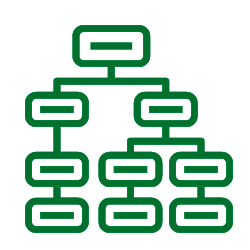
Align course content, assignments, and activities with relevant learning objectives
Whether designing a new course from scratch or revising an old or inherited course, it can be challenging to ensure that the content and activities of the class actually match the stated goals and objectives. The gold standard for course design is to begin the process by articulating goals for student learning (learning objectives) and then align the activities, tone, and assignments of the class with them. Educational developers call this process of articulation and alignment “backward design” — you start with where you want your students to end up, then work backward.
Learn more about aligned course design and how to write learning objectives on the Aligned Course Design page.
Engage students in constructing their own knowledge through active learning
Research indicates that students who engage actively with course content – by asking and answering questions, discussing issues and presenting ideas, applying and synthesizing their knowledge, etc. – perform better and retain their knowledge longer than those who passively listen to lectures or videos, memorize content for quizzes or exams, or simply repeat back in discussion or writing what instructors or texts say. As Chickering and Gamson put it in their classic essay on key principles in undergraduate education, "Learning is not a spectator sport. Students...must talk about what they are learning, write about it, relate it to past experiences and apply it to their daily lives. They must make what they learn part of themselves."
Learn more about active learning and find specific ideas for including more active learning opportunities in your course on the Active Learning & Metacognition page.
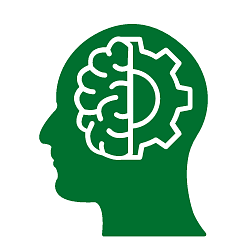

Ask a variety of types of questions and allot time for students to engage questions in class or in postings such as discussion boards
Asking students questions engages them actively and opens the door to curiosity, inquiry, and reflection. It also provides students with opportunities to practice with new or complex material and demonstrate what and how they are learning, which can take many forms, from discussion to writing down thoughts to engaging in group work to recording videos, etc. Teaching effectively with questions requires posing a variety of questions, providing sufficient time for student engagement, and involving all students in the answering of questions.
- Ask a variety of questions
- Vary question types. There are many types of questions you can ask students and have them ask each other, including questions that help identify assumptions, seek evidence to support claims or ideas, generate multiple perspectives for consideration, or elicit more nuance or complexity. TEP's handout on "Discussion Moves that Foster Critical Inquiry, Curious Exploration, and Collaboration" includes many specific examples.
- Use inquiry or question templates. Tools such as the Ultimate Cheatsheet for Critical Thinking provide students with a fruitful starting place and ongoing guidance for thinking, group exploration, and class discussion. You can also encouraging students to engage content using critical questioning protocols, for example a base set of questions such as these developed by Stephen Brookfield (2012):
- What assumptions do we hold about the topic, issue, or situation under examination – particularly concerning what counts as legitimate knowledge as we have defined it?
- How can we check these assumptions out for accuracy and validity?
- What alternative perspectives, explanations, or interpretations can we bring to bear on this topic, issue, or situation?
- What conclusions can we draw, or action should we take informed by our critical analysis?
- Organize different ways for all students to engage questions
In-class examples:
- Individual. Have students reflect on questions and write their thoughts or prepare to share aloud or as part of a small group. You can also elicit student responses using a physical polling strategy such as raised hands or colored cards, or an electronic audience participation tool such as iClickers or Poll Everywhere.
- Think-pair-share. Have students take a minute to gather their thoughts individually, then turn to a neighbor to discuss and refine their ideas, and finally share with the class. Share-outs can be oral or on whiteboards.
- Small groups. Similar to the think-pair-share, but with 3-5 students. To keep students focused and on track, pose the question both orally and in writing, and be sure to ask for a specific product. The latter might be as simple as groups recording their ideas physically or electronically where others can see them.
- Take a position. Pose a question and ask students to answer it from a particular point of view, perhaps that of a specific stakeholder in the problem under discussion, or simply one different from the student’s own inclination.
- Narrative Listening and Questioning. Have students form pairs or trios, with one student sharing thoughts in response to a question you pose, while the other student(s) listens, uses prompting questions to elicit more detail, and then summarizes what they heard. Then reverse roles with a new question. TEP's "Discussion Moves" handout includes a list of questions student can use to elicit more from each other.
- Gallery walk. Post around the room questions on pieces of paper with plenty of blank space. Students can circulate individually or in small groups, discussing their thoughts about the question at each station and recording their thoughts on the sheet. Subsequent visitors to the station can incorporate the recorded comments as part of their responses.
Online examples:
- Discussion Boards. You can adapt most of the ideas listed above for online classes by organizing the activities in Canvas Discussions, for example posing questions for students to ponder and then submit responses. In addition, use Canvas Groups to form smaller groups of students and help make online discussions more manageable. Both tools allow students to post attachments or links to online content that might inform answers to questions.
- Images and Annotations. Students can engage question prompts by connecting their responses to images, texts, or other relevant course content that lives in a virtual space. This helps students "ground" their replies, deepen their exploration, and connect asynchronously. Tools such as Perusall and Hypothesis allow for student collaboration with various content forms and both integrate well with Canvas.
- Videos and Infographics. Students can also submit more creative, elaborate forms of expression such as infographics or videos that explore particular questions or issues. Such options might be best as assignments given the work involved in their creation.
Implement a variety of assessments that promote learning and offer a variety of ways for students to demonstrate their understanding
To assess student learning is to obtain and analyze evidence of students' development of the knowledge, skills, etc. that indicate the extent to which students are meeting learning objectives. That is, students must demonstrate their learning in some tangible way, which can be either formative or summative.
- Use both formative and summative assessment
Summative assessment involves an evaluation of student learning at the end of a unit or course, a "summing up" of the content or substance of what students know, can do, etc. Summative assessment is often formal and associated with grades. Examples of summative assessment include comprehensive exams, research papers, projects, reports, presentations, etc.
Formative assessment refers to an evaluation of student learning during an intermediate moment of the learning process, which provides an opportunity to give students feedback and to allow them to reflect on their progress, ongoing challenges, strategies they might pursue moving forward, etc. Formative assessment is often informal and not graded - at least, not for the content or substance of student learning. Examples of formative assessment can include a range of options, such as:
- Prior Knowledge Probe: Use a short survey at the beginning of a course or unit to uncover student misconceptions or what they may already know or have experience doing, etc.
- Minute Paper: Ask student at the end of a class session or video lecture to write down what was the most important thing they learned or what questions they have.
- Muddiest Point: Have students indicate what point or idea in a lecture, discussion, reading, film, lab procedure, etc. was most confusing or unclear.
- Peer Review: Have students offer each other feedback - using a rubric or handout guide - about work such as papers, assignments, etc.
- Self-Reflection: Have students comment on their own work and their process for doing it, indicating for instance what is challenging, which strategies they are using, what they ought to do differently moving forward, and so forth.
Find many more examples of assessment techniques for both in-person and online courses in Learning Assessment Techniques (Barkley and Major, 2016)
- Offer students multiple options to demonstrate their learning
As instructors, we seek to help our students develop the knowledge and skills associated with the course in question. The methods we use to develop that knowledge are often independent of the content, and in fact might require skills otherwise unrelated to the course. For example, we frequently ask students to write in courses for which developing writing skills is not an explicit learning objective; some students in these courses might be able to demonstrate their learning better – and be more motivated – by giving an oral presentation, creating a video, or recording a podcast. Similarly, students who suffer from test anxiety may be better able to demonstrate their learning if they don’t have to sit down to a high-stakes exam but rather have more frequent, lower-stakes assessments.
Different faculty design for multiple means of expression in different ways. Some create assignments that ask all students to use the same mode of expression in a given assignment, then vary the mode from assignment to assignment. Others offer a choice of modes of expression within a given assignment.
Design universal rubrics. If students will submit work in a variety of modalities for a given assignment, you will need to develop a rubric that allows you to assess students’ progress toward the learning objectives, independent of a submission’s modality. The key is to strip away any evaluation criteria not associated with specific learning objectives. For more information, visit this University of Saskatchewan page on Designing Rubrics with Transparent Criteria, an excerpt from their OER resource, Universal Design for Learning: One Small Step. The page contains a link to a helpful example universal rubric.
Resources for supporting students creating:
- Videos. UO students can use Panopto to record videos, edit them, then upload them to Canvas as an assignment submission.
- Audio recordings/podcasts. Student audio recordings can be simple efforts recorded using the tools in Canvas, or they can be more elaborately done and include the option of making them publicly available. The New York Times has a resource designed to support middle and high school students creating podcasts for their student podcast contest. This podcast planning sheet from the state of West Virginia can help get students started.
- Infographics. Students can make infographics with a variety of platforms provided by the University, such as PowerPoint or Adobe Creative Cloud Apps (available on university-owned lab computers), or others available online for free. To get students started, you might have them read an excellent guide from Visme, A Beginner’s Guide to Creating Shareable Infographics.
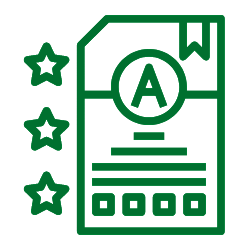

Provide prompt, constructive, and criteria-based feedback on activities and assignments
Students can only improve their knowledge and skills through practice and receiving feedback about what they’ve done and what to work on for next time. This might be as simple as providing the answer to a poll question you ask in class, or as complicated as writing a response to the rough draft of a student’s paper. To contribute to learning, such feedback must be (1) well crafted to act as “feedforward” and (2) students must engage with it to modify their thinking and practices. (Wiggins 2012; Fink 2013; Leibold & Schwarz 2015)
- Principles of effective feedback
To maximize the utility of your feedback, strive to make it:
- Criteria-based. Be transparent about the task and the criteria you will use to evaluate student work, then be sure to align your feedback with the criteria. If possible, provide a detailed rubric when you assign the work so students know ahead of time what you’ll be looking for and understand the different levels of achievement possible for the various criteria.
- Balanced. Provide positive reinforcement of things the student has done well in addition to corrective advice about things they need to work on.
- Constructive. Point to particular errors or areas to improve on or things done well and provide feedforward: comments that will help the student improve their work in a way that is applicable to the next draft or next assignment.
- Audience-appropriate. Your students are novices, so minimize use of unnecessary jargon or notation they will have difficulty understanding. Also, avoid giving too much or excessively detailed feedback (Basey, Mains, & Francis, 2014), which can take a long time to read and interpret and make students feel overwhelmed and hopeless.
- Prompt. As much as possible, minimize the amount of time students must wait before receiving feedback on their work. Short time gaps – days rather than multiple weeks – mean that they remember the work better, and have more time before the next assignment to absorb your comments and use them to improve. [Note, however, that slight delays are preferable to truly instantaneous feedback. For example, if possible, provide answers to computerized test questions after the test is complete, rather than after each question. (Butler, Karpicke & Roediger, 2007)]
- Frequent & Ongoing. Provide feedback to each learner as often as you can. This affords the student many opportunities to learn what they are doing well and what they can improve on. It can also help build the instructor-student relationship. Ongoing feedback about similar assignments, e.g. different lab reports over the course of a term, or on multiple drafts of the same assignment is also helpful in promoting growth.
- Encouraging. Use positive language that supports students’ growth mindset- the idea that if they keep at it, they will learn and succeed at the task. Also, explain that you give constructive criticism not because you are being mean or to point out that you think they are incapable. To the contrary, you give constructive criticism precisely because you think the student can succeed and that they need to know what they have done wrong in order to improve the next time. (Yeager, 2014)
- Leverage technology to provide a variety of feedback
- Canvas Media Recorder. Canvas has a feature that allows you to record audio or video feedback for students to replay. Some faculty find that recording their comments in this way saves time. View a recording of Using Video for Assignments and Feedback, a workshop in which Dr. Philip Matern of the Department of Human Physiology discusses how he uses video feedback in his courses.
- Canvas document viewer. If students submit a file viewable on Canvas’ Document Viewer, you have the ability to add comments in a variety of formats directly to the document.
- Make efficient use of your time
Providing feedback can be very time consuming, but these strategies can help you use your time efficiently.
- Be selective. Comment on errors originating from lack of understanding rather than careless mistakes.
- Identify patterns. If you notice global errors – many students making similar mistakes – address them with whole-class feedback, rather than saying the same thing to each student.
- Develop a comment library. If you give electronic feedback, consider using Canvas Speedgrader’s Comment Library, to reduce the need to type the same thing many times. Alternatively, cut and paste from a master document of common praise and critical comments.
- Promote student engagement with feedback
To make sure the time you spend providing feedback is well spent, require students to engage with the feedback in some way. Some strategies:
- Talk about it. Take some class time to discuss why feedback is important and useful. Explain that it’s necessary for improvement and that you provide it to promote learning.
- Reflect. Have students write a short reflection or discuss the feedback with a partner. Prompts might ask them to:
- Summarize feedback in their own words, highlighting how it aligns with the learning objectives for the assignment.
- Identify positive and corrective feedback.
- Develop an action plan for using the feedback to improve the next assignment.
- Come up with questions the feedback raises for them
- Describe how they used it. When they hand in the next draft or the next similar assignment, have students include a paragraph detailing how they used the feedback from the previous assignment to improve their work this time.
Promote metacognition and facilitate practice of efficient learning strategies
Metacognition is the process of thinking about one’s own thinking and learning. It is an important part of self-regulated learning, which involves planning and implementing strategies for study, monitoring progress, and assessing results. Students who engage in metacognitive exercises improve their exam performance, written or designed products, and problem-solving ability. Moreover, metacognition helps students improve their sense of self-efficacy and independent agency, which in turn increases their motivation to learn.
Students who practice metacognition and self-regulated learning need a variety of efficient learning strategies in their toolboxes. Many common practices are inefficient, such as highlighting text, using notes or the text as a crutch when working problems, rereading texts multiple times, and re-working already-solved problems. Such strategies tend to produce an illusion of learning rather than developing skills and storing information for the long term. Research points to more effective learning strategies, which you can design into your course. Discussing the strategies and the reasons why you have incorporated them can help students apply them elsewhere in addition to improving their grasp of your course material.
- Include effective learning strategies
The strategies described here are shown by research to improve skill development and retention of information for the long term. For an in-depth discussion of their utility in different contexts, refer to the comprehensive meta-analysis by Dunlosky, et al.
- Retrieval. The more often we recall information and practice ways of thinking without referring to notes or texts, the firmer their placement into long term memory. Ask students to answer questions and work problems about things they’ve already been exposed to by trying to recall the information or process from memory, referring to notes later to check their work. At the beginning of a class session, you might ask students to write down the main points of the previous class session without referring to notes, or give low-stakes, no-notes quizzes.
- Spaced practice. Dividing practice into multiple sessions spread over time leads to better long-term retention of information than spending the same cumulative amount of time in one or two sessions. In other words, cramming is not effective for long-term learning. Build this principle into your course by asking students to apply knowledge and skills from past weeks in new assignments. For example, include questions about “old” material in new problem sets or quizzes, or ask students to compare and contrast new ideas with ones from earlier in the term.
- Interleaving. It is more effective to mix up material when studying than to study obviously similar concepts together or do the same type of problem multiple times in a row. Interleaving content in this way makes it easier to see relationships between concepts and prevents the illusion of knowledge that comes with repeated practice without interspersing other material. Facilitate interleaving by writing problem sets, quizzes, and practice exams that skip around in the material, or by designing activities that require application of a variety of skills.
- Elaborative interrogation. Having students develop questions and then attempt to answer them facilitates deeper engagement and understanding of the material. The questions might be overarching ones about a whole text or finer-grained ones about smaller sections. While such questioning is often inherent in the lessons faculty develop, students might not realize this unless faculty draw attention to it. Try explicitly modeling the process when you guide discussion of a text, or use Perusall or Hypothesis to create an assignment asking students to annotate the text with their questions and answers.
- Self-explanation. People understand concepts and processes more deeply if they take time to explain the content out loud or in writing. Build in opportunities for students to answer questions like: “What does this sentence mean?” “What is the main idea of this paragraph?” “How do we know?” “Why take this step when solving a problem?” You might require students to write down the reasoning they use when solving problems on a quiz, answer questions you pose about a reading, or make a video explaining in their own words how one piece of knowledge follows from the prior knowledge base.
- Consider including metacognitive assignments
- Wrappers. "Wrappers" are short reflective exercises that students complete before and after assignments or exams. For instance, before starting an assignment or taking an exam, students can be asked how well they think they can describe an important concept or solve a specific kind of problem or answer a specific kind of question and why. After students then complete the assignment or exam, see their actual results, and receive feedback , they can be asked to the same reflection questions, albeit looking back at their actual work. Then they can compare their prior perceptions/assumptions with their actual performance and identify what was accurate or inaccurate, what worked or didn't work, what they should do again or do differently to prepare for next time, etc. In this way, the assignment or exam (or any other kind of activity) is "wrapped" with self-reflection so that students are thinking not just about content or results but also about their learning process. Wrapper exercises can be "graded" for completion only as a way to incentivize them.
- Learning Logs. After completing an assignment or activity, students can take time to reflect on what they found interesting about the assignment/activity, what they found challenging, what strategies they used to complete it, and what other strategies they might choose next time. Maintaining a log of interests, challenges, and strategies over time can help students identify effective patterns to maintain or enhance, or ineffective patterns that need changed or replaced. These insights can be the basis of classroom discussion or inform a "strategies for class success" document housed in Canvas. Having students complete short minute papers at the end of class or periodic surveys are other ways to engage them in regular metacognitive work.
- Big Picture Reflections. Students can write a "Dear New Student Letter," in which they reflect on what they have learned about how to succeed in the class - including what they did that was effective or wish they had done differently - and then write this up as advice to future students in the class. Another example is a reflection essay in which students describe what they found most interesting or surprising about the class and why; what was most challenging, why, and how they addressed this challenge; and what is at least one thing they learned in the class they plan to apply or engage further in the future. See other ideas from TEP and UO Faculty for creating powerful endings involving reflection.
Additional metacognitive learning strategies and assignments can be found on TEP's Metacognitive Teaching and Learning Activities handout.
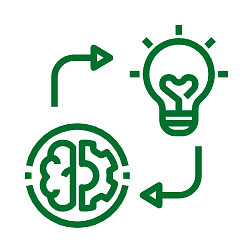
References
Barkley, E. F., & Major, C. H. (2015). Learning assessment techniques: A handbook for college faculty. Jossey-Bass
Basey, J. M., Maines, A. P., & Francis, C. D. (2014). Time Efficiency, Written Feedback, and Student Achievement in Inquiry-Oriented Biology Labs. International Journal for the Scholarship of Teaching and Learning, 8(2), n2.
Brookfield, S. D. (2012). Teaching for critical thinking: Tools and techniques to help students question their assumptions. Jossey-Bass.
Butler, A. C., Karpicke, J. D., & Roediger III, H. L. (2007). The effect of type and timing of feedback on learning from multiple-choice tests. Journal of Experimental Psychology: Applied, 13(4), 273.
Dolan, E. L. (2016). Course-based undergraduate research experiences: current knowledge and future directions. Natl Res Counc Comm Pap, 1, 1-34.
Dunlosky, J., Rawson, K. A., Marsh, E. J., Nathan, M. J., & Willingham, D. T. (2013). Improving students’ learning with effective learning techniques: Promising directions from cognitive and educational psychology. Psychological Science in the public interest, 14(1), 4-58.
Fink, L. D. (2013). Creating significant learning experiences: An integrated approach to designing college courses. Jossey Bass.
Leibold, N., & Schwarz, L. M. (2015). The art of giving online feedback. Journal of Effective Teaching, 15(1), 34-46.
Waterman, R., & Heemstra, J. (Eds.). (2018). Expanding the CURE model: course-based undergraduate research experience. Research corporation for science advancement.
Wiggins, G. (2012). Seven keys to effective feedback. Educational Leadership, 70, 10-16.
Yeager, D. S., Purdie-Vaughns, V., Garcia, J., Apfel, N., Brzustoski, P., Master, A., ... & Cohen, G. L. (2014). Breaking the cycle of mistrust: Wise interventions to provide critical feedback across the racial divide. Journal of Experimental Psychology: General, 143(2), 804.
